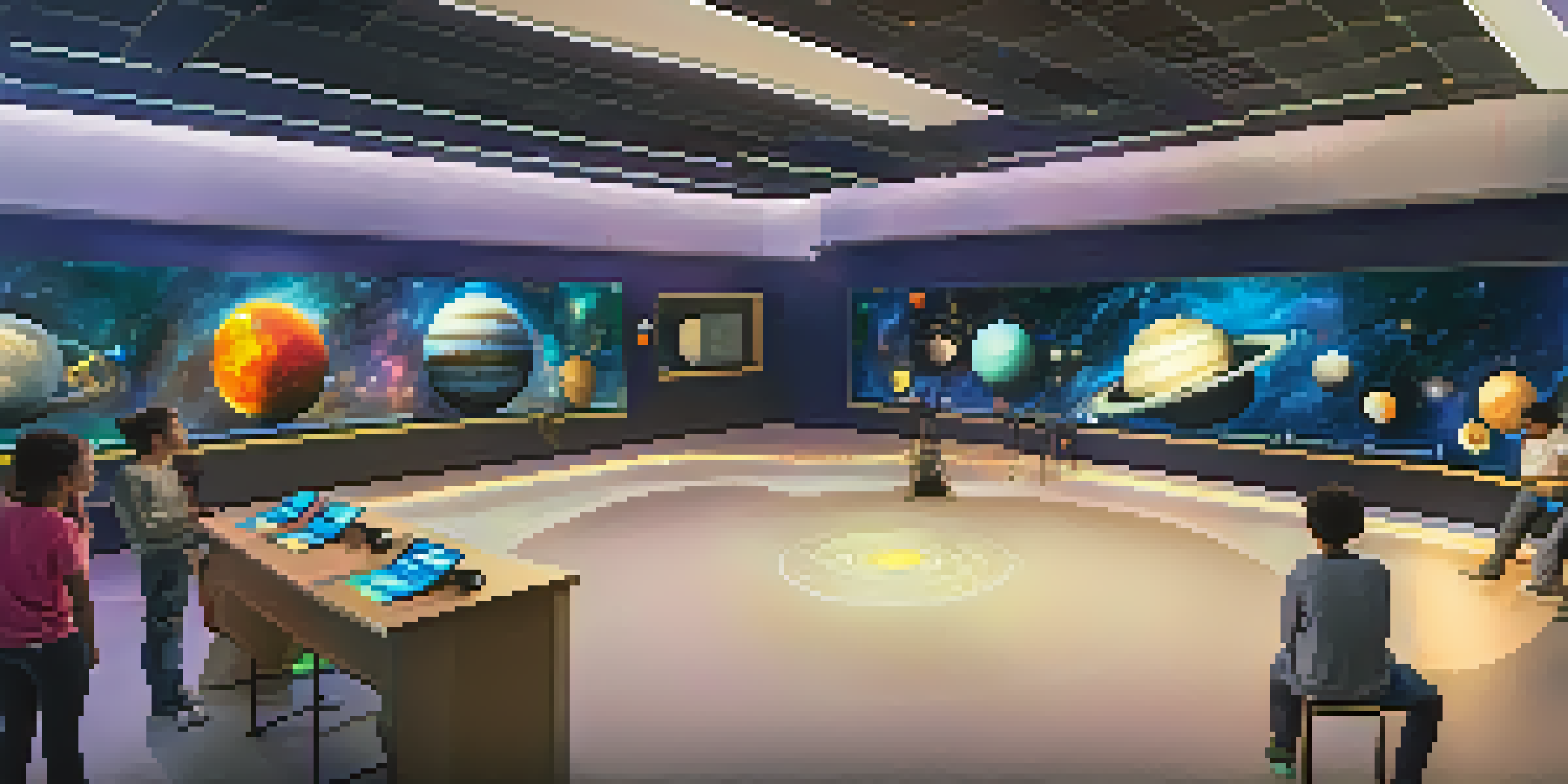Using Virtual Reality to Elevate Digital Storytelling Experiences

Understanding Virtual Reality in Storytelling
Virtual reality (VR) is a technology that immerses users in a computer-generated environment. Unlike traditional storytelling, where the audience is a passive observer, VR allows them to interact with the narrative. This shift in perspective transforms how stories are conveyed, making them more engaging and impactful.
Virtual reality is the most immersive medium ever created.
Imagine stepping into your favorite book or movie; VR makes that dream a reality. By simulating real-world experiences, VR creates a sense of presence that traditional media cannot replicate. This immersive quality draws viewers into the story, helping them connect with characters and plots on a deeper level.
As VR technology continues to evolve, the opportunities for storytelling expand. Writers and creators can now explore innovative ways to craft narratives that resonate with audiences, ultimately elevating the storytelling experience.
The Power of Immersion in Storytelling
Immersion is at the heart of what makes VR a game-changer in storytelling. It allows users to engage with the story in a way that feels personal and immediate. When viewers feel like they are part of the story, their emotional investment increases, leading to a more memorable experience.

For example, in a VR experience, you might find yourself walking alongside a character, feeling their emotions firsthand. This level of interaction can evoke strong feelings, making the story more relatable and impactful. Such experiences can lead to profound reflections and discussions about the narrative's themes.
VR Transforms Storytelling Experience
Virtual reality immerses users in narratives, allowing for interactive engagement that enhances emotional connections.
As creators harness this power of immersion, they can craft stories that linger long after the experience ends. By tapping into the emotional core of storytelling, VR can leave a lasting impression on audiences.
Innovative Storytelling Techniques with VR
Virtual reality opens the door to innovative storytelling techniques that break the mold. One approach is non-linear storytelling, where users can choose their path through the narrative. This level of agency allows for multiple outcomes and encourages viewers to explore different perspectives.
The best way to predict the future is to create it.
Additionally, VR can incorporate elements like haptic feedback, where users feel sensations that correspond to the story. Imagine feeling the vibrations of a thunderstorm or the warmth of a campfire; these sensations enhance the immersive experience. Such techniques not only captivate but also deepen emotional connections.
As creators experiment with these techniques, the possibilities for storytelling become limitless. By blending narrative and interactivity, VR can revolutionize how stories are told and experienced.
Enhancing Education Through VR Storytelling
Virtual reality storytelling is not just for entertainment; it also has valuable applications in education. Imagine students stepping into historical events or exploring scientific concepts in a fully immersive environment. VR can make learning more engaging, allowing students to experience lessons firsthand.
For instance, instead of reading about ancient civilizations, students could walk through a 3D recreation of a historical site. This approach fosters curiosity and deeper understanding, as learners engage with the material on a personal level. The hands-on experience makes education more memorable and effective.
Innovative Techniques in VR Narratives
Techniques like non-linear storytelling and haptic feedback are revolutionizing how stories are told and experienced in VR.
As educational institutions begin to adopt VR technology, we can expect a shift in how subjects are taught. By integrating storytelling into the learning process, educators can create more meaningful and impactful experiences for students.
Emotional Engagement and VR Storytelling
One of the most potent aspects of VR storytelling is its ability to foster emotional engagement. When users are placed in the middle of a story, they often form connections with characters and scenarios that resonate with their own experiences. This connection can evoke empathy and understanding in ways traditional media often cannot.
Consider a VR experience that places you in a refugee's shoes, allowing you to experience their journey firsthand. Such powerful narratives can inspire compassion and action, motivating audiences to engage with real-world issues. The emotional impact of these stories can lead to meaningful conversations and social change.
In this way, VR storytelling becomes not just a form of entertainment but a tool for advocacy and awareness. By harnessing the emotional power of immersive experiences, creators can influence perceptions and inspire audiences.
Challenges in VR Storytelling
While the potential of VR in storytelling is immense, there are challenges that creators must navigate. One of the primary hurdles is accessibility; not everyone has access to VR headsets or the technology required to experience immersive stories. This limitation can hinder the widespread adoption of VR narratives.
Additionally, creating high-quality VR content requires significant resources and expertise. Writers, designers, and developers must collaborate closely to ensure a seamless storytelling experience. This complexity can make the production process more challenging compared to traditional media.
VR Enhances Educational Engagement
Virtual reality storytelling provides immersive learning experiences that foster curiosity and deeper understanding in educational settings.
Despite these challenges, the enthusiasm for VR storytelling continues to grow. As technology advances and becomes more accessible, we can expect to see innovative solutions that overcome these barriers, paving the way for more creators to explore this exciting medium.
The Future of Storytelling with VR
Looking ahead, the future of storytelling with virtual reality is bright and full of possibilities. As technology progresses, we can expect even more immersive experiences that blur the lines between reality and fiction. This evolution will likely lead to new genres and forms of storytelling that we can't yet imagine.
Moreover, as audiences become more familiar with VR, their expectations will evolve. Viewers will seek out deeper, more interactive stories that challenge traditional narratives. Creators will need to adapt and innovate continually to meet these changing demands.

Ultimately, the fusion of storytelling and virtual reality promises to reshape how we share and experience narratives. As we embrace this new frontier, the potential for impactful and transformative stories is boundless.